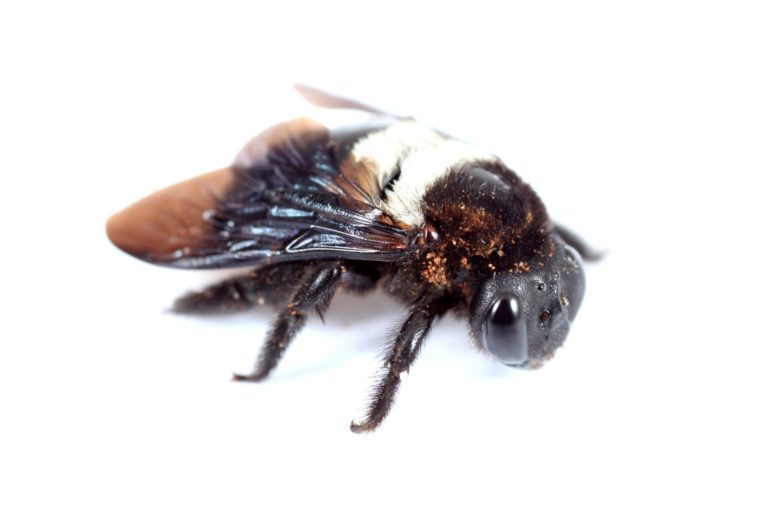Carpenter Bees
- Carpenter bees are species in the genus Xylocopa of the subfamily Xylocopinae.
- Many species in this enormous genus are difficult to tell apart; most species are all black, or primarily black with some yellow or white pubescence. Some differ only in subtle morphological features, such as details of the male genitalia.
- Males of some species of carpenter bees have a white or yellow face, unlike bumblebees, while females lack the bare corbicula of bumblebees; the hind leg is entirely hairy.
- In several species, the females live alongside their own daughters or sisters, creating a small social group. They use wood bits to form partitions between the cells in the nest.
- A few species bore holes in wood dwellings. Since the tunnels are near the surface, structural damage is generally minor or superficial. However, carpenter bee nests are attractive to woodpeckers, which may do further damage by drilling into the wood to feed on the bees or larvae.
- They vibrate their bodies as they rasp their mandibles against hard wood. Each nest has a single entrance coupled with many adjacent tunnels.
- Carpenter bees do not eat wood. They discard the bits of wood, or reuse particles to build partitions between cells. The tunnel functions as a nursery for brood and storage for the pollen/nectar upon which the brood subsists.
- The provision masses of some species are among the most complex in shape of any group of bees; whereas most bees fill their brood cells with a soupy mass and others form simple spheroidal pollen masses.
- The eggs are very large relative to the size of the female, and are some of the largest eggs among all insects. Carpenter bees can be timber pests, and cause substantial damage to wood if infestations go undetected for several years.

References
Wikipedia contributors. “Carpenter bee.” Wikipedia, The Free Encyclopedia. Wikipedia, The Free Encyclopedia, 8 Jun. 2022. Web. 30 Sep. 2022.






